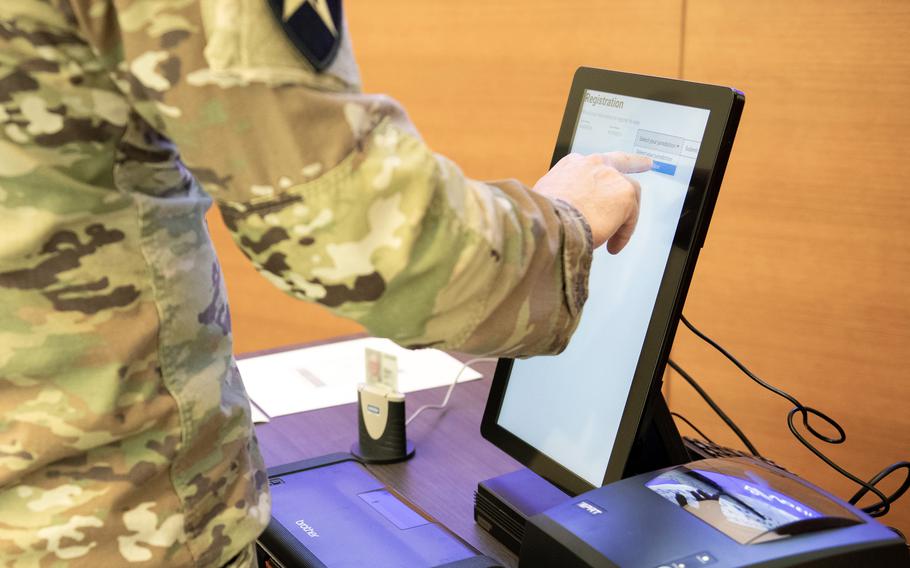
A service member tests an early-stage prototype of voting technology aimed at improving the experience of military absentee voters at the Defense Advanced Research Project Agency in Arlington, Va., Feb. 7, 2024. (Department of Defense)
The prototype of a deployable voting machine unveiled last week could one day allow service members around the world to transmit a signed, encrypted digital ballot to their home precinct for tallying on Election Day.
The machine was presented during the National Association of Secretaries of State and the National Association of State Election Directors conference in Washington, D.C., according to a Defense Department news release Monday.
The prototype was developed as part of a research project funded by the Defense Advanced Research Projects Agency that seeks methods to make voting easier for troops stationed away from their districts.
The team hopes to conduct a pilot program from the prototype as early as next year.
“Compared to the civilian population, a lower percentage of active duty military have voted in recent federal elections,” the Federal Voting Assistance Program states on its website.
The government assistance program works to “ensure service members, their eligible family members, and overseas citizens are aware of their right to vote and have the tools and resources to successfully do so.”
Among the problems that impede service members from voting is the speed at which voters receive and transmit election materials, such as voter registration forms, ballot requests or the ballots themselves, the website states.
Researchers from VotingWorks, a not-for-profit election technology company, displayed the early-stage prototype at the conference on Wednesday.
“We want military voters to be first-class voters and have the same abilities as other voters,” Ben Adida, executive director of VotingWorks and the technical lead on the project, said in the news release.
The research team developed the prototype with several goals in mind.
It wants military voters to be able to cast privacy-protected ballots, receive paper ballots for verifiability and have their vote counted as part of election-night results.
“We want them to be a part of that because that’s an important part of being and feeling enfranchised during the voting process,” Adida said in the release.
Adida said he was aware that up to now most solutions proposed to improve military election participation have focused on internet voting, a technology the team has rejected.
“We are holding a hard line that voters should have a voter-verified paper ballot that’s part of an audit when all is said and done,” he said in the release.
The prototype voting machine relies on the Common Access Card that is issued to each military member and includes digital-signature capability for authentication.
“The terminal would also print paper ballots along with a mailing label to be sent to the service member’s home state for audits — which usually occur up to four weeks after Election Day,” the DOD news release states.
Producing a paper ballot that can be verified by the voter and subsequently audited by election officials is of “critical importance” in any such deployable voting machine, Adida said in the release.
The team expects that widespread deployment of the voting machines could greatly increase the number of service members who cast votes — but it won’t solve every problem, Steve Trout, VotingWork’s head of government partnerships, said in the news release.
“I’ve just accepted that at least for now, we’re not going to get ballots transmitted from submarines,” he said.